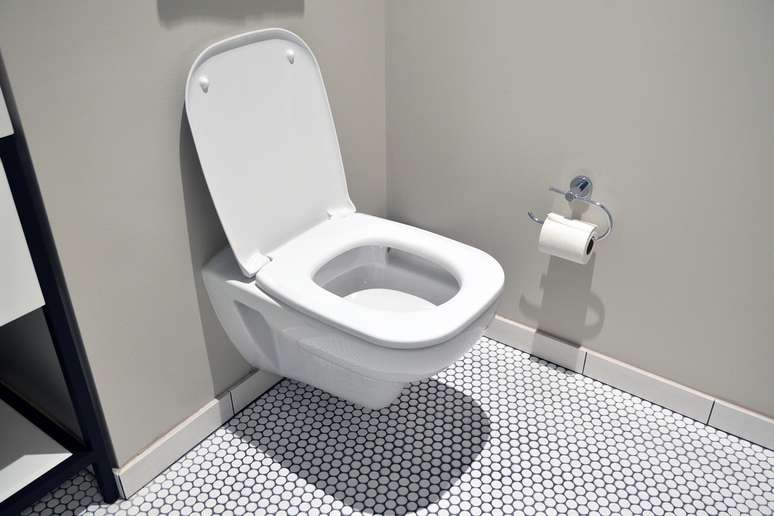Distraction when leaving the bathroom creates a phenomenon known as the “aerosol effect” and can harm your health
Flushing the toilet after using the toilet may seem like a simple and routine task, but leaving the lid open during this act can create serious health risks. According to Margareth Cunha, pharmacist and coordinator of the Biomedicine course at the Centro Universitário Braz Cubas, this practice can spread particles of water, urine, feces and waste into the air, a phenomenon known as the “aerosol effect”.
When the flush is flushed, the force of the water creates a fine spray that can contain bacteria, viruses and other pathogens found in the waste. “These particles can spread throughout the bathroom, contaminating nearby surfaces, such as toothbrushes, towels and personal hygiene items,” warns Cunha.
This risk becomes even more relevant in shared environments, where multiple people use the same bathroom. The particles generated can reach different parts of the body, especially exposed areas.
Among the main areas at risk we remember:
- Face and mouth: Particles can reach the face, increasing the risk of inhaling or ingesting pathogens, which can lead to infections.
- Eyes: The eyes represent a direct route for the entry of pathogens, which can cause eye infections.
- Hands: They can be contaminated by touching surfaces near the toilet or objects that have been exposed to the particles.
- Exposed skin: Any part of the skin, such as arms or legs, can come into contact with the particles, although the risk of infection is lower than on mucous membranes.
- Clothes and hair: Particles can land on clothing and hair, increasing the risk of contamination on other surfaces when touched.
“These particles not only contaminate skin and clothing, but can also transfer to objects and surfaces, such as towels and toothbrushes, increasing the risk of infections,” warns Cunha.
What infections can be transmitted if the toilet lid is not closed?
The pharmaceutical company lists the main diseases that can be transmitted:
- Gastroenteritis: Caused by bacteria such as Escherichia coli (E. coli) and Salmonella, they can cause diarrhea, abdominal pain, fever and vomiting.
- Clostridium difficile infections: Resistant to many treatments, it can cause severe diarrhea, especially in people with compromised immune systems.
- Urinary infections: Bacteria such as Enterococcus and Proteus mirabilis can cause urinary tract infections if they come into contact with the skin or mucous membranes.
- Hepatitis A: Present in feces, it can be transmitted by accidental ingestion of contaminated particles, causing inflammation of the liver.
- Norovirus: Highly contagious, it can cause epidemics of gastroenteritis through viral particles present in the air.
- Giardiasis: A parasite that can be transmitted through contaminated water or surfaces, causing diarrhea and dehydration.
- Rotaviruses: Common in children, it can be transmitted through inhalation of contaminated particles.
“These infections can be transmitted by touching contaminated surfaces or by inhaling airborne particles that land on personal items, such as toothbrushes, towels or food,” explains Cunha.
The recommendation is to always close the lid before flushing, ensuring the health not only of those who use the bathroom, but also of those sharing the space. This measure helps maintain the cleanliness and safety of items.
Source: Terra
Ben Stock is a lifestyle journalist and author at Gossipify. He writes about topics such as health, wellness, travel, food and home decor. He provides practical advice and inspiration to improve well-being, keeps readers up to date with latest lifestyle news and trends, known for his engaging writing style, in-depth analysis and unique perspectives.








